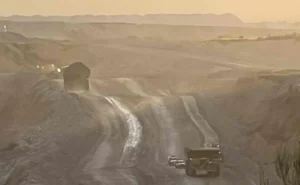Renewables are cheap and getting cheaper by the day and – further boosted by favorable production tax credits for wind and investment tax credits for solar and mandatory state-level renewable portfolio standards (RPS) – are taking market share away from fossil fuels, notably coal.
The Trump Administration is fighting back by trying to save coal through whatever means at its disposal including rescinding environmental regulations and opening up public lands to mining.
That, however, is clearly not enough. Even in the absence of any regulations hardly anyone would want to invest in a new coal-fired plant in the US when natural gas is plentiful and cheap, and renewables are even more plentiful and getting ever cheaper.
Which is most likely what prompted energy secretary Rick Perry to write a letter to the Federal Energy Regulatory Commission (FERC) in Sept 2017 asking for a fundamental rule change in competitive wholesale markets to favor coal and nuclear plants. His excuse of an explanation was that, somehow, this would make the US grid more resilient, extensively covered in Nov & Dec 2017 issues of this newsletter.
Perry’s argument was that plants that can store fuel-on-site for 90 days or more deserve a bonus – something that only applies to coal and nuclear plants. Nearly everyone who knows anything about how competitive electricity markets operate and how prices are set objected to the proposal inundating FERC with hundreds of comments – nearly all against the proposed rule changes. The only exceptions came from – you guessed it – a handful of coal and nuclear generators.

For an administration that makes up the facts as needed – Washington Post recently reported that President Trump has made more than 2,000 false or misleading claims over the past 355 days, or 5.6 per day – there was speculation that FERC would ignore the overwhelming evidence and give in to the political pressure. After all, 4 of the 5 Commissioners, 3 of them Republicans, were recent Trump appointees.
On 8 Jan 2018, however, FERC showed its independence – and maintained its relevance as a non-partisan regulatory agency – by unanimously rejecting Perry’s proposal ostensibly on legal grounds. The decision is binding.
In response to Perry’s unsubstantiated concerns about the resiliency of the grid, FERC ordered a new investigation to decide whether additional measures are needed.
FERC said it had already taken measures to address the resilience issue including prior orders to better coordinate the natural gas and power markets and encourage pay-for-performance capacity market changes in ISO-NE and PJM. These measures, FERC said, were taken to ensure an uninterrupted supply of power in the face of fuel disruptions or extreme weather conditions.
In rejecting Perry’s proposal, FERC resorted to legal – rather than policy or economic – reasons, perhaps a safer option given the current political undercurrents in Washington DC. It said DOE’s proposal failed to clear a major legal hurdle. Under the Federal Power Act, all FERC decisions must be “just and reasonable,” and Perry’s proposal did not prove that existing rules were unjust or unreasonable.
“Neither the proposed rule nor the record in this proceeding has satisfied the threshold statutory requirement of demonstrating that the RTO/ISO tariffs are unjust and unreasonable,” FERC said.
“While some commenters allege grid resilience or reliability issues due to potential retirements of particular resources, we find that these assertions do not demonstrate the unjustness or unreasonableness of the existing RTO/ISO tariffs.”
Moreover, the arbitrary 90-day fuel-at-site requirement, invented by Perry, could have blocked power plants that offer resilience contributions from taking part in the market and this “could have led to discrimination in the markets.”

To deflect any criticism, real or imagined, that FERC was not sufficiently concerned about the grid’s resiliency, the Commission spelled out how it would address the issue going forward, including an investigation to develop a common understanding of what “resilience” of the bulk power system means and what measures may be required to achieve it.
For his part, Energy Secretary Rick Perry, who most likely under- estimated the unpopularity of his proposal, released a statement, in which he tried to make the most out of a major setback:
“I appreciate the commission’s consideration and effort to further assess the marketplace distortions that are putting the long-term resiliency of our electric grid at risk. As intended, my proposal initiated a national debate on the resiliency of our electric system.”
Repeating his original arguments, and the absurdity of his proposed solution, Perry said,
“What is not debatable is that a diverse fuel supply, especially with onsite fuel capability, plays an essential role in providing Americans with reliable, resilient and affordable electricity, particularly in times of weather-related stress like we are seeing now. I look forward to continuing to work with the commissioners to ensure the integrity of the electric grid.”
Perry conveniently failed to mention that his proposal would have cost American electricity consumers an estimated $1 to 4 billion per year in extra utility bills, according to a study by ICF International Inc., a consultancy.
DOE, Perry said, plans to stay actively engaged in the nationwide conversation on resiliency, liaising with FERC, the ISO/RTOs, and other stakeholders as the debate about the issues continues.
FERC has ordered ISO/RTOs to submit reports on the resilience of their network within 60 days, including prevailing wholesale market rules, improved planning and coordination – say between gas and power – and examining existing NERC reliability standards – things that really matter, rather than focusing solely on DOE’s fuel-on-site.
In the process, FERC has proposed a definition for resilience:
“The ability to withstand and reduce the magnitude and/or duration of disruptive events which includes the capability to anticipate, absorb, adapt to, and/or rapidly recover from such an event.”
While FERC commissioners voted unanimously in rejecting Perry’s nonsensical proposal, some released concurrence statements explaining their reasons. Richard Glick, for example, said,
“The record in this proceeding does not demonstrate any need for the commission to interfere with the continued evolution of the bulk power system. Nor does the record support the department’s (DOE) proposed remedy: a multi-billion-dollar bailout targeted at coal and nuclear generating facilities.”
Neil Chatterjee, a Republican and former aide to Senate Majority Leader Mitch McConnell,
had to be more conciliatory to the Trump Administration. He said, “I applaud Secretary Perry’s bold leadership in jump-starting a national conversation on this urgent challenge,” and expressed concern about the “many nuclear and coal units particularly at risk of economic retirement despite their significant contribution to bulk power system resilience.” Nobody wants to be the subject of an early morning Tweet from the White House.
Chatterjee and few others like him aside, the reaction to the FERC decision was overwhelmingly positive. The National Association of Regulatory Utility Commissioners (NARUC) said, “We applaud the Commission for upholding the rule of law and taking the only appropriate actions under the circumstances. Joe Bowring, the Independent Market Monitor for PJM, the largest wholesale market in North America said he appreciated the Commission’s continued support of competitive wholesale power markets, as evidenced most recently by this order.

In a blog titled “Perry Says NOPR; FERC Says Nope” posted on 8 Jan, Joshua Rhodes, a research fellow at the Energy Institute at Univ. Texas at Austin wrote:
“The fact is that our electricity system is changing. The average coal plant in the US is 45 years old; that is pretty much the end of life for these assets. The average age of our nuclear fleet is 37 years — they are also reaching the end of their useful life. We have other options today that are cheaper and cleaner than coal, can be built in smaller sizes (less risk) and have future price stability (wind and solar).
“The (DOE) proposal was at best a solution (subsidize coal and nuclear) in search of a problem (fuel reliability), and at worst a market-distorting intervention in the spirit of picking specific winners and losers on top of the direct and indirect subsidies that coal and nuclear already receive. While it is true that other forms of energy — including wind and solar, nascent technologies that needed an early boost — have enjoyed temporary subsidies, these are set to expire as the industry rises, whereas this NOPR would have created an ongoing subsidy for an industry in decline.
“If you (referring to Perry) truly value reliability and resilience in a competitive energy market, create a new market for that service and let everyone bid to supply it.”
As this editor sees it, cooler heads finally prevailed and withstood what must have amounted to intense political pressure. This suggests that there is hope even when Rick Perry is running the DOE or Scott Pruitt is in charge of the Environmental Protection Agency (EPA) or Ryan Zinke is the Secretary of the Department of Interior.
Perhaps others will also find the courage to stand up for what is right and reject what deserves to be rejected.
Perry Sioshansi is president of Menlo Energy Economics, a consultancy based in San Francisco, CA and editor/publisher of EEnergy Informer, a monthly newsletter with international circulation. He can be reached at [email protected]
Source: EEnergy Informa. Reproduced with permission.










